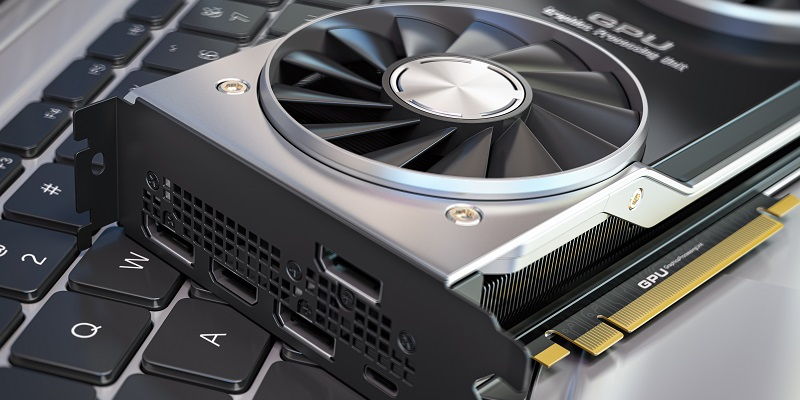AMD has recently rolled out an upgraded version of its AMDVLK Vulkan driver for Radeon GPUs, featuring several ray tracing optimizations and numerous bug fixes. This highly anticipated driver update, following its scheduled release in Q3, aims to enhance performance and provide a better user experience for AMD GPU users. Let’s delve deeper into the improvements and changes brought about by this driver update.
AMD’s new AMDVLK Vulkan driver with ray tracing optimizations
AMD’s release of the Q3 scheduled driver has been eagerly awaited by users, and the company has finally delivered. The new AMDVLK Vulkan driver introduces various ray tracing optimizations that aim to significantly enhance real-time rendering capabilities. This advancement brings AMD closer to competing with NVIDIA’s RTX platform, which has gained prominence in the gaming and content creation industries.
Additionally, this driver update includes a series of accumulated optimizations and bug fixes to resolve existing performance issues. The aim is to provide AMD users with a smoother and more stable experience while maximizing the potential of their GPUs.
Enhanced multitasking performance with the new driver update
One notable feature introduced with the new driver update is “quad buffer stereo.” This functionality significantly enhances multitasking performance by allowing the GPU to render multiple frames simultaneously. This improvement is particularly beneficial for intensive multitasking scenarios and professional applications, where users often work with multiple windows and applications simultaneously.
By enabling quad-buffer stereo, AMD aims to provide improved responsiveness and fluidity when multitasking, further solidifying their commitment to meeting the evolving needs of their users.
Other changes and additions in the new driver update
In addition to the ray tracing optimizations and quad-buffer stereo functionality, AMD has also introduced several other improvements and additions in this latest driver update. One significant change is the implementation of ray tracing support for the popular game Quake 2, taking advantage of the GPU’s hardware acceleration capabilities to deliver stunning visual effects and a more immersive gameplay experience.
Furthermore, the update incorporates additional optimizations aimed at enhancing performance across a range of applications and games, striving to deliver consistently smooth and fluid performance for AMD GPU users. These improvements aim to address any lingering performance issues and ensure a seamless experience across various software and gaming titles.
Comparison with open-source MESA Vulkan drivers for AMD GPUs
Despite the impressive improvements brought by AMD’s official driver update, it is worth noting that the open-source MESA Vulkan drivers for AMD GPUs currently offer a better state of functionality and performance. The open-source community has dedicated significant efforts to optimizing these drivers for AMD hardware, resulting in superior compatibility and performance in many applications.
Due to this disparity, some Linux users have shifted away from AMD’s official drivers, instead preferring the open-source alternatives. This highlights the importance for AMD to further enhance their official driver offerings, ensuring that all users, regardless of their preferred operating system, can experience the full capabilities of their GPUs without resorting to alternative solutions.
Delay in the merge request for complete ray tracing support
Despite the notable additions and optimizations in the AMDVLK Vulkan driver update, one particular feature that has been sought-after by users is complete ray tracing support. AMD’s developers initiated the integration of this feature months ago; however, the merge request is still pending. While the company has made progress in this area, the delay with its implementation has prompted some users to seek alternative solutions.
Linux users are shifting away from AMD’s official drivers
The superior state of open-source MESA Vulkan drivers and the delays in implementing desired features have led to a significant number of Linux users opting for open-source driver alternatives instead of AMD’s official drivers. This shift presents a challenge for AMD as it results in a loss of potential user base and poses a threat to the company’s reputation among Linux users.
The need for AMD to improve software utility updates
To maintain a competitive edge and enhance user experience, AMD must prioritize improving its software utility updates. Timely and robust updates are crucial, not only for addressing any performance issues but also for ensuring compatibility with the latest hardware and software advancements. By investing in efficient driver development and release cycles, AMD can establish itself as a reliable and preferred choice among GPU users.
AMD’s decisive steps with Zen 5 and RDNA 4 enablement
While it is evident that AMD needs to focus on improving its individual user experience, the company has made significant strides in other areas. AMD’s ongoing work on Zen 5 and next-generation RDNA 4 enablement demonstrates their commitment to pushing boundaries and delivering cutting-edge technology to the market. These developments hold promise for future AMD GPU users, who can anticipate even more impressive performance and features.
As AMD releases its latest AMDVLK Vulkan driver with ray tracing optimizations, it is clear that the company is taking steps to refine its GPU offerings and provide a more satisfying user experience. However, the comparison with open-source Mesa Vulkan drivers highlights the need for AMD to further improve its official drivers to address the concerns of their users, especially within the Linux community.
While AMD’s decisive steps with Zen5 and RDNA 4 enablement show promise for the future, a focus on regular and efficient software utility updates is vital for maintaining customer satisfaction and competitiveness in the GPU market. By continuing to refine their drivers and listening to user feedback, AMD can establish itself as a reliable and preferred choice for GPU users across different platforms.

